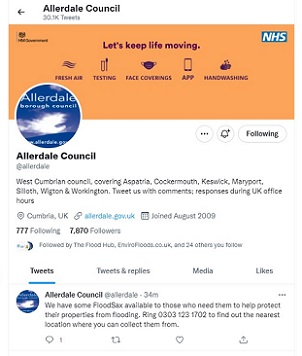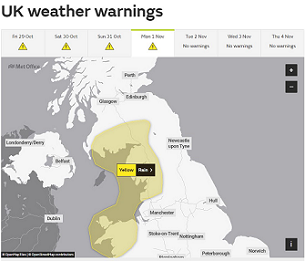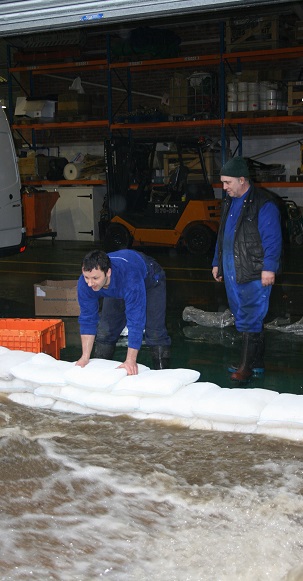

 FloodSax alternative sandbags keeping torrential floodwater out of a warehouse
FloodSax alternative sandbags keeping torrential floodwater out of a warehouse
FloodSax ‘sandless sandbags’ on frontline of battle to stop flooding in Cumbria
FloodSax alternative sandbags are being used in Cumbria after the area was badly hit by torrential rain and flooding with the bad weather due to continue for the next few days.
Allerdale Borough Council, a West Cumbrian council which covers Aspatria, Cockermouth, Keswick, Maryport, Silloth, Wigton and Workington, put out an emergency tweet to people.
It said: “We have some FloodSax available to those who need them to help protect their properties from flooding. Ring 0303 123 1702 to find out the nearest location where you can collect them from.”
The Met Office has a yellow warning out for Cumbria right through until Monday, November 1, which means the bad weather will continue to cause disruption. Honister Pass in Cumbria suffered 12 inches (30cm) of rain in just 24 hours. Roads have been shut and rail services badly disrupted.
FloodSax (www.floodsax.co.uk) were designed by Yorkshire entrepreneur Richard Bailey, managing director of Huddersfield-based Environmental Defence Systems, and almost 3 million have been sold worldwide, including to many local authorities across the UK.
They are a far better alternative to traditional sandbags as they resemble a large pillowcase until they come into contact with water which they absorb to weigh 20kg and can then be built into highly effective flood barriers. This means they are space-saving to store and quick and easy to deploy right at the spot where you need them. Traditional sandbags are very difficult to store and need a lot of manpower to transport anywhere.
In their dry state FloodSax are ultra-thin with a large surface area so can be put under pipes, boilers, sinks and other hard-to-reach places to soak up drips, leaks, spills and floods until a plumber can get there to repair the problem.
According to the BBC some businesses in Cumbria have struggled to get insurance cover after previous severe flooding and so don’t have any insurance at all.
Cockermouth and District Chamber of Trade chairman Andrew Marshall said massive insurance policy excesses introduced after the floods of 2009 and 2015 meant 90% of businesses would have to pay for any repairs themselves.
He explained: “Ever since then it’s been nigh on impossible to get insurance. If we get flooded this time we’ve got to pay for the rebuild and everything, which goes into hundreds of thousands of pounds.”
He said insurers have imposed excesses of up to £50,000 for business flooding claims in the area.
A Government scheme called Flood Re was set up after previous floods which helps homeowners with flood insurance but excludes businesses.
Every insurer that offers home insurance in the UK must pay into the Flood Re Scheme. This levy raises £180m every year which Flood Re uses to cover the flood risks in home insurance policies.
Flood Re works with insurers behind the scenes. When people buy home insurance cover their insurer can choose to pass on the flood risk element of their policy to Flood Re for a fixed price.
If the person then makes a valid claim for flooding their insurer will pay the claim and then be reimbursed from the Flood Re fund. This helps to keep flood insurance premiums down.
For more information on where to buy FloodSax alternative sandbags go to http://www.floodsax.co.uk/buy/uk-suppliers/